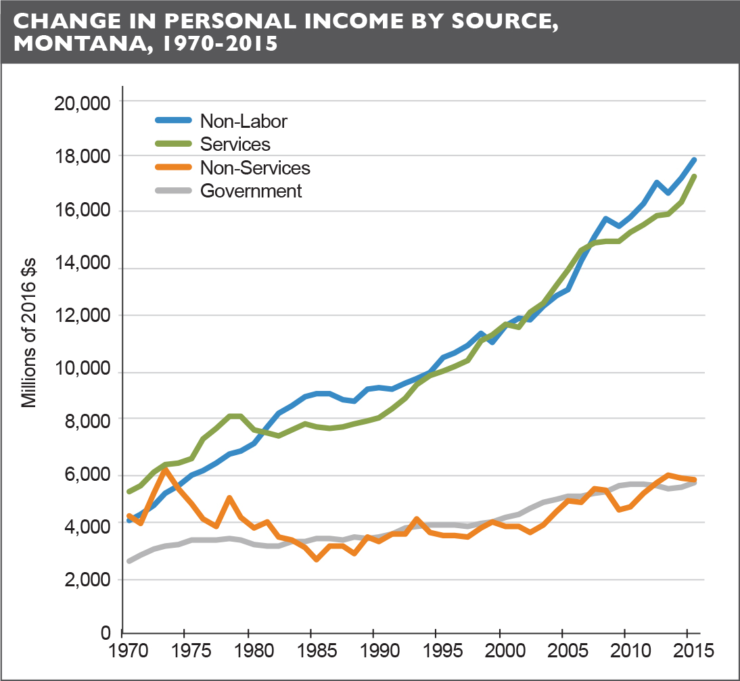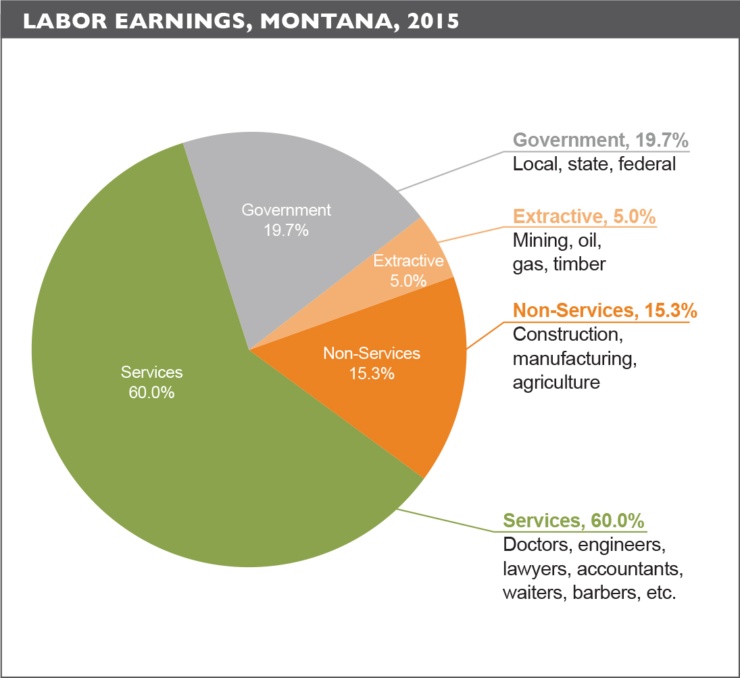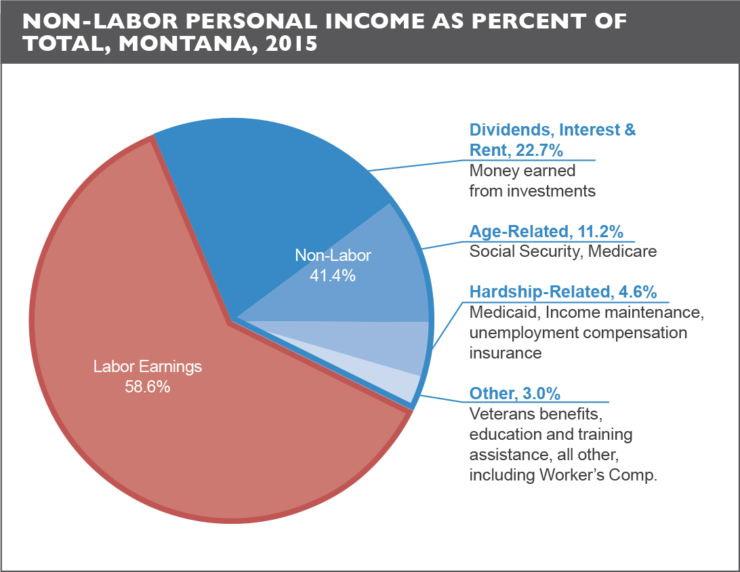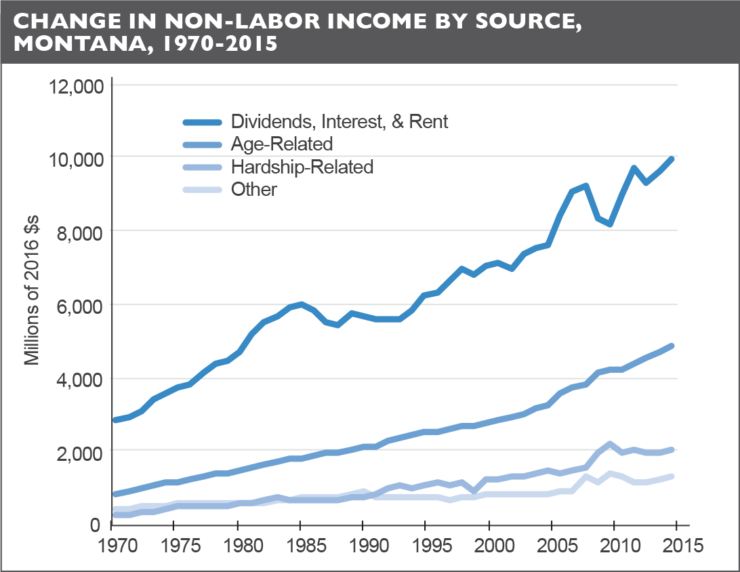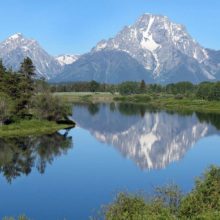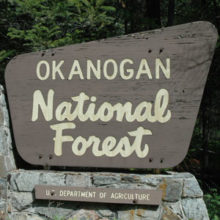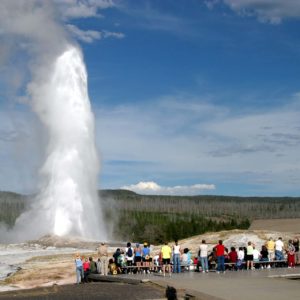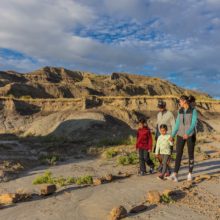- Overall, Montana’s economy is performing well. From 2001-2015, Montana’s employment increased by 20% while total real personal income increased by nearly half. Compared to the U.S., Montana’s real per capita income grew more than twice as fast.
- As Montana’s economy diversifies, state assets–such as quality education and federal public lands–are increasingly important to attracting businesses and people crucial to the state’s economic future.
- The top five fastest growing Montana counties during 2000-2015 are responsible for more than 75% of Montana’s job growth and benefit from nearby public lands and a diversity of growing economic sectors.
This report was sponsored by Business for Montana’s Outdoors as part of an effort to share new research and facilitate discussions among some of Montana’s leading businesses.
Montana Is Growing and Outperforming Rest of the Nation
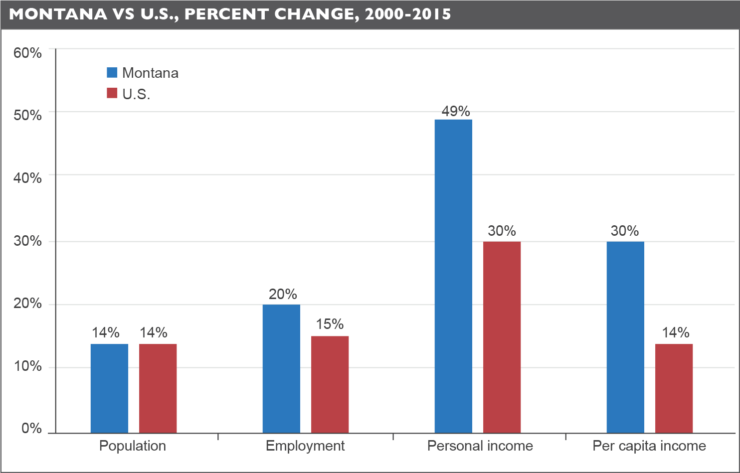
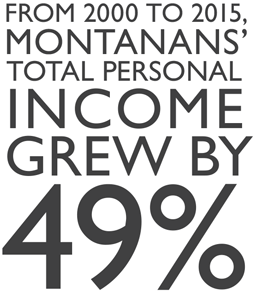
From 2000-2015, Montana’s employment increased substantially while total real personal income increased by nearly half. Compared to the U.S., Montana’s real per capita income grew more than twice times as fast.
This growth is driven by an increase in higher quality jobs, and the rapid increase of investment and retirement income in the state. Public lands are helping to diversity Montana’s economy and fuel industries like outdoor recreation, and professional and technical services.
The western half of the state has grown the fastest, led by Gallatin, Lewis and Clark, Flathead, Missoula, and Yellowstone counties. These five counties were responsible for more than three-quarters of job growth from 2000 to 2015.
A Mix of Service Industries Led Montana’s Job Growth
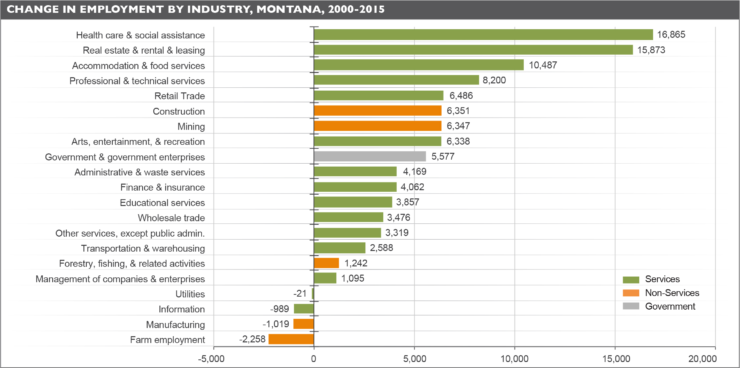
Personal Income Trends Show Montana’s Diversifying Economy
Since 1990, 80% of growth in personal income in Montana has come from people who work in service industries, or from non-labor income sources (dividends, interest, rent, Social Security, Medicare, Medicaid, etc.).
Non-Labor Income: Large and Growing Part of Montana’s Economy
Non-labor income sources are the single largest component of Montana’s economy, contributing 41% of all personal income.
From 2000 to 2015, non-labor income sources in Montana grew by 54 percent while labor earnings grew by 43 percent. By 2015, non-labor income totaled $18.1 billion dollars, which is more than three times larger than labor earnings in farming, mining, construction, and manufacturing combined.
Non-labor income stimulates other sectors of the economy such as health care, construction, and retail sectors. For example, retirees moving to a community with investment income promote retail sales and home-building, and communities with high dependence on Medicaid may experience growth in local health services.
Counties with Public Lands Attract People and Jobs

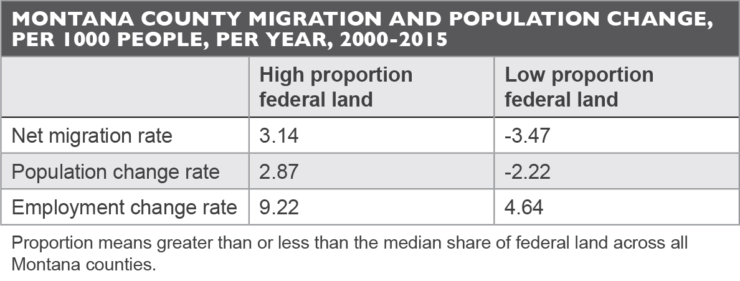

Montana counties with a higher share of federal lands have outperformed counties with a smaller share of federal lands, attracting a higher rate of in-migration and more overall population growth.
Federal Lands Play an Important Role in Rural Western Counties
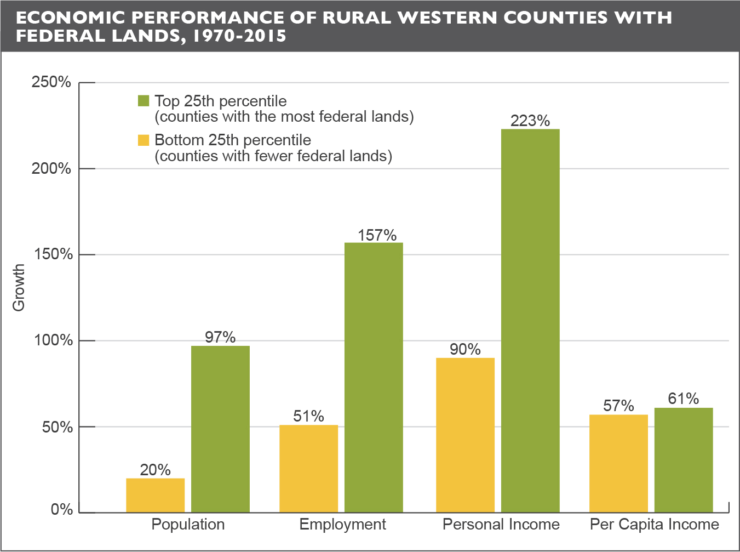
“Our quality of life is defined by our public lands and access to them. This gives us and other tech companies in Montana a distinct competitive advantage. We can recruit and retain top talent successfully within and outside the state because of the world-class landscape that surrounds us.”
Lance Trebesch, CEO TicketPrinting.com


